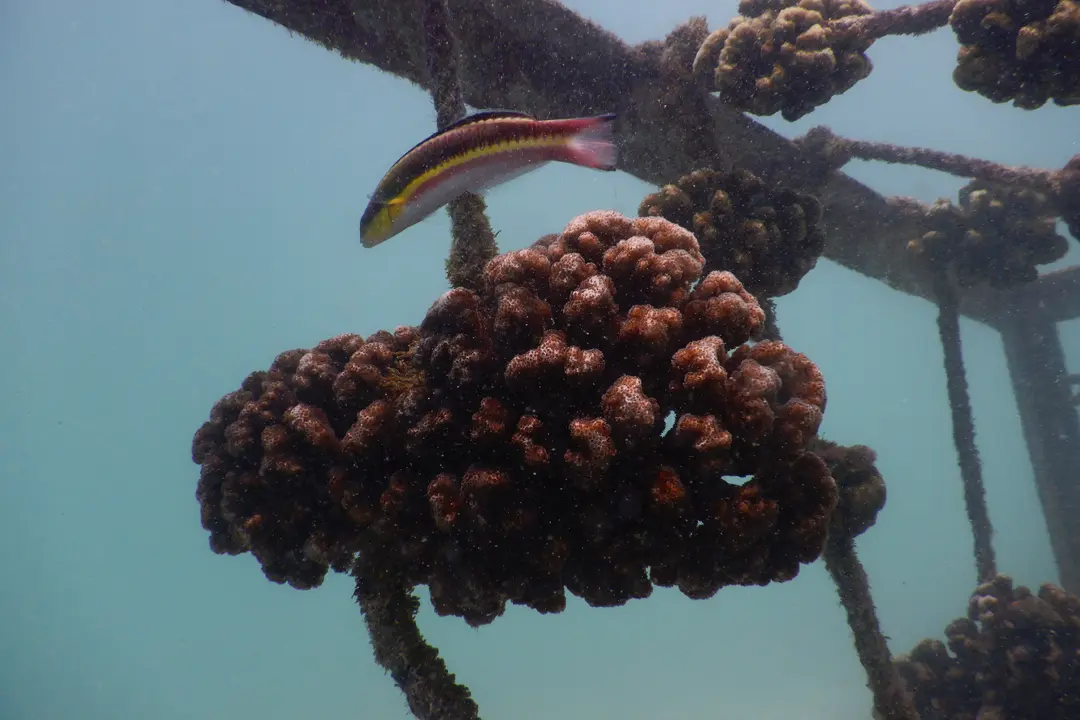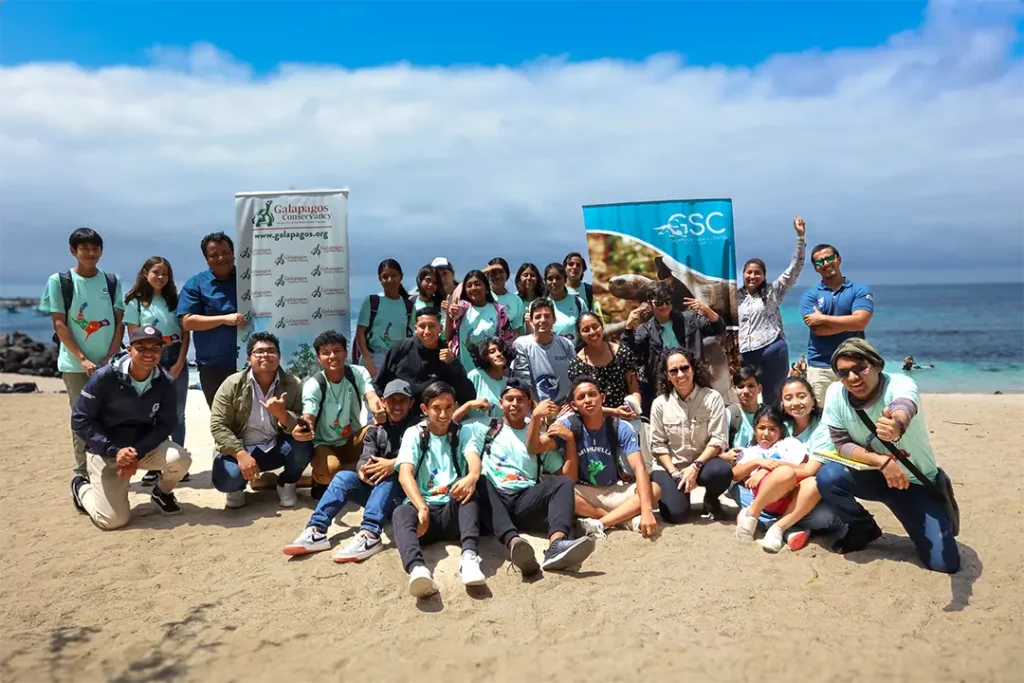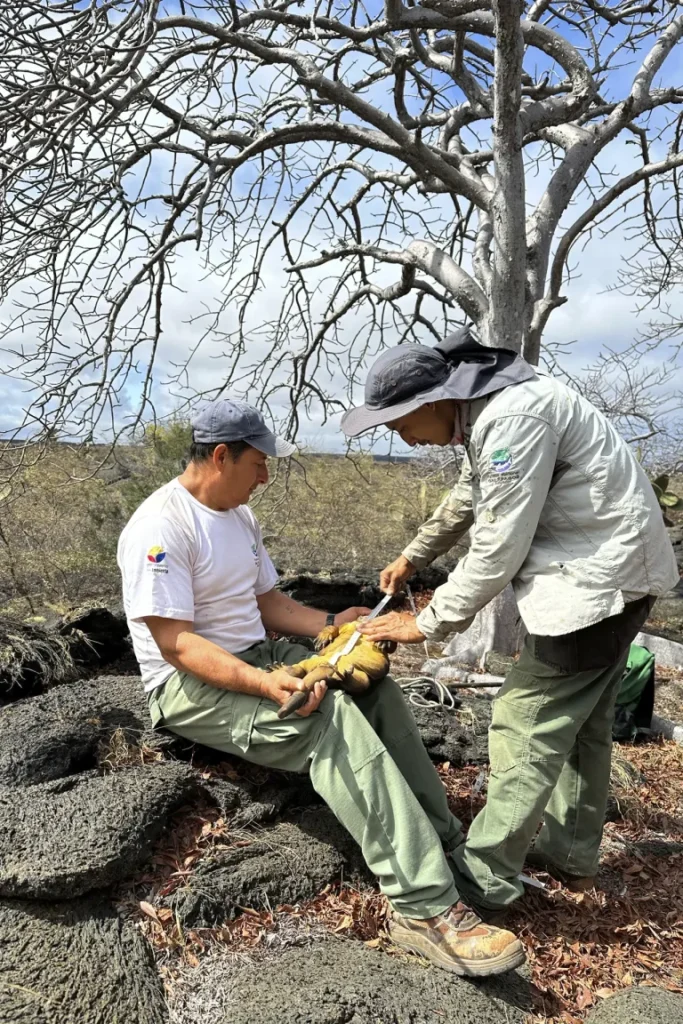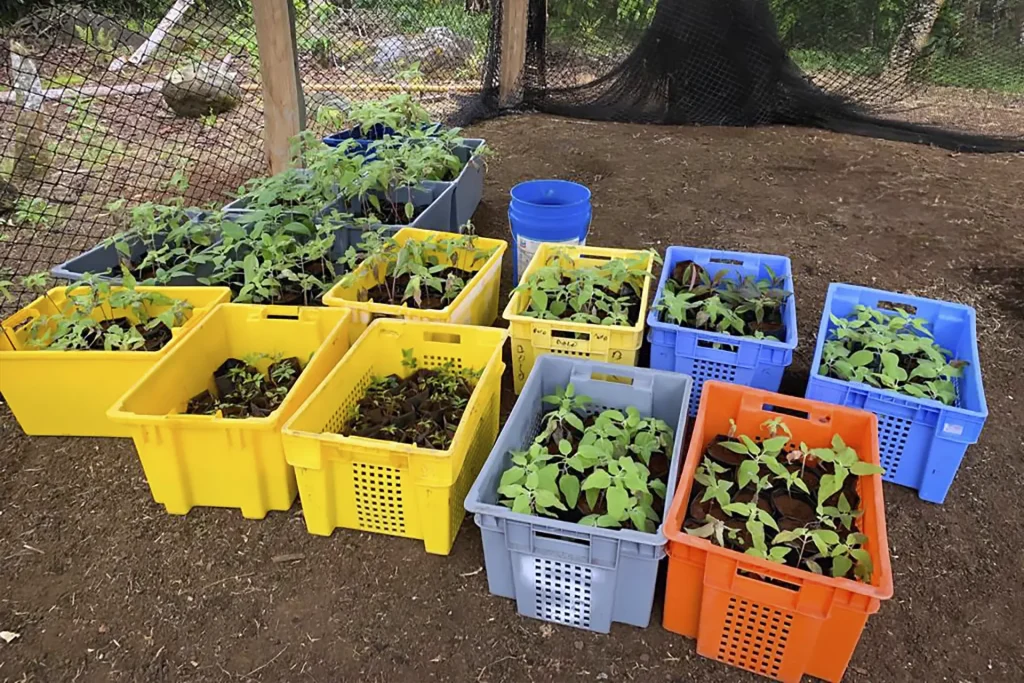The Galapagos giant turtle’s recovery is a great example of how scientific insights can be used to create innovative conservation. In 1965, captive rearing programs were established for giant tortoises. These programs have been crucial to the recovery of several tortoise species. The programs are designed to raise tortoises safely during the first five years of their lives, when they’re most vulnerable to predators, food shortages and water scarcity. It would not have been possible to bring giant tortoises back from the brink without the dedication of those who work behind the scenes. Galapagos Conservancy works with Galapagos National Park Directorate in order to run breeding centres.
Walter Chimborazo’s Dedication
Our experts can make a difference. Walter Chimborazo, is one of these experts. Walter Chimborazo is a friendly and familiar face at the Fausto Llerena Breeding Center in Santa Cruz Island. He works with park rangers there to ensure the well-being and safety of thousands of young tortoises.
Walter’s dedication is evident in his days: he distributes greens every Monday, Friday, and Wednesday to the tortoises. Walter cleans the corrals of the tortoises on other days and makes sure they get enough sun to maintain a healthy body temperature and growth. Walter is on call seven days a weeks during nesting season to adjust the temperature in incubators to optimize development. Walter is the Godfather to thousands of these gentle giants. The most rewarding part for him is watching them grow.
Cristian Gil: A Passionate Trip to Galapagos
Cristian’s commitment is evident at the Arnaldo Tupiza breeding center on Isabela Island. The center was established in 1995 and serves as a sanctuary for the threatened tortoises of the island. Galapagos Conservancy funded recent upgrades at the center. These include breeding pens and improved enclosures. The upgrades improve the lives of the tortoises while allowing the staff to provide better and less disruptive care. They also demonstrate their renewed commitment towards the tortoises.
The story of Cristian l, another of our turtle experts is equally inspiring. He was raised on Isabela Island on the flanks the Sierra Negra volcano, where he witnessed the dramatic decline of the giant tortoises. Cristian’s passion for protecting his native land led him to study environmental science, and then join the team at Galapagos Conservancy.
Collaboration for a Sustainable Future
This successful collaboration with Galapagos National Park Directorate has enabled us to add a human touch to our breeding centers. Walter’s commitment to Santa Cruz, and Cristian’s to Isabela are just two examples. We can continue this success story through continued collaboration, dedication and innovation on the grounds. The power of collaboration is what makes all this possible.

©Galápagos Conservancy
Galapagos Conservancy proudly supports the conservation efforts of Galapagos National Park Directorate. This includes the Project for Resilient Corals in the Central-South Bioregion, Galapagos Marine Reserve. This initiative is designed to protect coral reefs, one of the most fragile ecosystems within the reserve. These reefs are vital to the health of marine life and are a great attraction for both scientists and tourists.
Coral Resilience: a Positive Outlook
The hard work of park rangers has made significant progress this year. In the Central-South Bioregion, you will find sites like Santiago, Floreana and Espanola that were once famous for their vibrant corals reefs. Climate change and other factors have had a severe impact on these ecosystems.
Corals that remain in these areas tell not only the story of Galapagos, but also offer important insights on resilience and adaptability in the face adversity. Corals are vital to marine ecosystems. They’re often called “the lungs” of the ocean. Corals provide habitat for many species and form natural barriers to protect coastal areas against erosion.
Scientists continue to monitor the reefs and have found that certain coral species are resilient. Certain corals adapt and find ways to thrive and survive despite stressors like rising water temperatures. This adaptation is vital for their survival, and provides valuable lessons about how ecosystems can cope with future challenges.
Coral Health Monitoring and Improvement
The project’s main objective is to evaluate the health of coral fragments from the islands of Santa Cruz, Floreana and Espanola. We have updated our map of coral fragments in the reserve thanks to fieldwork and research expeditions. These fragments of coral are carefully being cultivated at the nursery in Bahia Academia in Puerto Ayora in “beds” made from ropes and mesh to protect them against harmful light and environmental factors.
Corals are resilient despite facing many challenges. Monitoring has shown that since June 2024 there has been an increase in the presence of algae, which negatively impacts the health and survival of corals. This has caused a 20% mortality rate for branching corals as well as a 30% death rate in older nursery fragments. Massive corals, however, have been able to withstand bleaching. It is important to control the growth of Ulva, a type of green alga, and red filamentous bacteria.
Community Engagement and Collaboration
This project would not have been possible without the participation of local volunteers. The community, especially young people, has shown a strong commitment in supporting coral reef cleaning and monitoring activities. Their participation not only helps maintain these ecosystems, but also inspires future generations to become environmental advocates.
Look to the Future
Our project also aims to identify the coral species that are most resistant. We are collecting data about how coral colonies react to temperature changes, which is important for the conservation and global restoration strategies of Galapagos Corals.
We organized a coral-cleaning event recently at the Bahia Academia Coral Nursery, where we care for 185 fragments of coral from eight different species. This is important because the growth of algae tends to be more pronounced during colder months. We provide space in the nursery for corals to grow and then transplant them to areas of the ocean that require restoration.
This collaboration with Galapagos National Park Directorate will be vital to restoring biodiversity and protecting Galapagos’ unique marine treasures. We remain committed to conservation efforts to preserve the rich marine life of the Galapagos.

©GNPD
Galapagos Conservation understands that conservation of the unique biodiversity on the islands requires engagement with the whole community.
Galapagos is home to many local communities that have a valuable resource – a generational, deep understanding of the environment. Su local ecological knowledge proporciona una vision matizada de los ecosistemas y las especies que habitan en las islas, ayudando a los esfuerzos de conservacion.
The Galapagos Conservation team is mostly based in the islands. They not only share a deep commitment to protect this unique place, but they also understand the realities of that area. Galapagos Conservancy is deeply connected with the challenges and opportunities that we face. We’ve developed more sustainable and effective conservation strategies by combining local knowledge with modern scientific approaches.
Conservation collaboration with local communities
Conservation is not something that can be imposed. It must involve those who live in the ecosystems. With around 30,000 residents relying on nature for their livelihoods–whether through tourism, fishing, or agriculture–Galapagos Conservancy promotes a community-centered approach. We encourage sustainable practices by involving the local community in protecting their environment. This benefits both their everyday lives and ecosystems that they depend upon.
Empowering Galapagos for a Sustainable Future
We believe that the first step in creating a conservation culture on Galapagos is to empower its residents. The Sustainability Education Program is a program that works with teachers on the islands to reach over 7,000 students. The program ensures that environmental education is a part of the curriculum for all students in Galapagos. We also support local entrepreneurs by offering grants to encourage community-led, sustainable projects. Thanks to the generosity of our donors since 2021, we’ve funded conservation projects which engage communities in protecting Galapagos ecosystems. This effort demonstrates our commitment to empowerment and sustainable development, showing the tangible impact that working with local communities can have.
A sustainable future is in sight
We are confident that working together and empowering the local communities, we can create a sustainable and prosperous future for Galapagos. We are creating a network of environmental stewards by integrating environmental education and support local entrepreneurs.
As our general director, Dr. Washington Tapia says: “The success and collaboration of the local communities is often crucial to our conservation work on Galapagos.” We can protect the biodiversity of this archipelago by supporting initiatives from the local communities.
This comprehensive approach reinforces local communities’ commitments to protect their environment, and ensures sustainable management of Galapagos natural resources. It benefits both the people and the ecosystems.

©Galápagos Conservancy
Recent discoveries of Galapagos Petrel nests on Isabela Island have sparked new optimism in the conservation of this critically endangered endemic species. This is a significant step forward in the protection of one of the archipelago’s most iconic seabirds. Their breeding habitat had been under constant threat for many years.
The team, led by experts of Galapagos conservancy along with rangers of Galapagos National Park explored possible nesting sites for petrels on the flanks the Sierra Negra volcano. This included both agricultural and protected areas.
A parte de un proyecto mas grande financiado por la National Fish and Wildlife Foundation (NFWF) para mejorar los habitats de anidacion de las petrelas de Galapagos, los miembros del equipo buscaron a fondo nuevos sitios de anidacion y tambien exploraron areas donde se habian registrado previamente nidos. El equipo tambien evaluo las amenazas que enfrenta la poblacion de petrelas en la isla. Las petrelas excavan grandes y profundas madrigueras en los densos suelos volcanicos en las partes altas de las islas donde construyen nidos simples en los que ponen sus huevos y crian a sus jovenes. Generalmente estan bien protegidas en sus madrigueras, pero enfrentan amenazas de ratas que comen a los polluelos e incluso a veces a los adultos, perros que excavan los nidos y plantas exoticas que pueden ahogar las madrigueras de anidacion de los petrelas.
Active Nests and Encouragement Signs of Recovery
During their expedition, the team found 11 nests in the National Park. Three of them showed signs of recent activity, such as feathers and droppings. Petrel chicks were also confirmed in several burrows found on local farms, which previously showed signs of activity. This is a major step forward for the recovery of this species. No photographs have been taken of petrel chicks nesting on Isabela Island. This population is genetically different from the four other nesting populations in Galapagos.
Other farms within the agricultural zone also had nests, which were clearly evidence of recent occupancy. These discoveries are vital for expanding our knowledge of the distribution and condition of petrels in Isabela Island.
Domenica Pinda, the leader of the expedition and a researcher at the Galapagos Conservancy, was excited to discover chicks inside the nests. She noted that this discovery gives hope for the recovery of the species. She said that, while there is much more work to do, the results of this expedition confirm we are on track to secure the future for petrels in Isabela Island.
Continued Threats
The presence of invasive animals and plants was one of the main challenges that the team encountered during the expedition. The team found a high concentration of invasive plants in most nesting sites, including guava, blackberry and signs of rats and insects. Nests were difficult to reach in these densely vegetated areas. Nests on local farms that were active were located in open areas. Typically, these nests are in pastures where cattle and horses graze to prevent the invasion of guava or blackberry plants.
Look Ahead
Galapagos Conservancy will continue to monitor nests of petrels and work closely with the Galapagos National Park Directorate in order to implement strategies for controlling invasive species. We will also soon be conducting new expeditions on Isabela Island to explore potential nesting sites. This will help us better understand the behavior and needs of these seabirds.
We reaffirm through these initiatives our unwavering dedication to the conservation and protection of Galapagos Petrels, as well as the ecosystems that are essential for their survival.

A team of Galapagos Conservancy specialists and park rangers from the Galapagos National Park Directorate led by Dr. Jorge Carrion, of the Galapagos Conservancy embarked recently on a crucial mission to safeguard the last wild population of yellow land Iguanas (Conolophus Subcristatus) of Galapagos. Cartago Bay is a rugged, remote and seldom visited area on Isabela Island‘s southeast shore. They spent eight days searching through hot lava fields, small hills and dense vegetation for the elusive Iguanas. They captured, measured and marked many of them, while collecting essential biological samples. This is the last wild population on Isabela Island, and it has not been monitored for 20 years. The team’s findings suggest that this isolated population is likely to recover.
Population Monitoring
The team caught 288 yellow land Iguanas during the expedition: 117 males and 171 females. The strong and feisty animals can be difficult to capture, but even more so to handle. The team managed to measure every iguana they captured, allowing them to determine the size of the population, its distribution, and the changes in conservation status.
The 288 individuals were tagged in two different ways: 50% of them had never been tagged, and the other 50% had subcutaneous devices fitted. Interestingly, some of the iguanas captured in 2024 had been part of a captive-breeding program that was launched in the 1970s. These individuals, which were introduced to Cartago Bay as juveniles several decades ago, would be around 50-60 years of age. This suggests that some individuals have not only survived, but thrived.
Dr. Jorge Carrion stated that the monitoring effort had produced an estimated population of 600-700 in Cartago Bay. He said that they also saw the positive effect of removing feral goats from the habitat of the iguanas. This allowed the habitat to recover, and more food was available for the iguanas.
Biological Sample Collection
The collection of biological specimens was another essential task on the expedition. The iguanas’ blood and feces were collected and will be analyzed soon to gain insight into the genetic health, diet and presence of diseases. This information will help develop effective protection strategies to protect this iconic species, both in Cartago Bay as well as elsewhere on the archipelago.
Recording other species of interest
The team also recorded other species of note in the area. Invasive species pose a serious threat to yellow-land iguanas. No invasive plant species have been recorded on this expedition. However, feral cats are common. Cats can eat iguanas that are still in their juvenile stage and this could potentially affect iguana reproductive success.
Expedition Success
The Cartago Bay expedition marked an important milestone in the efforts to conserve the yellow iguana. The expedition activities, from population monitoring to collecting biological samples, provide valuable information that will be used in developing a conservation strategy. The discovery of previously-tagged individuals is a clear indication of the success and ongoing efforts towards the reintroduction of young iguanas in the wild.
Scientists, technicians and park rangers observed an ecosystem that was steadily recovering after the removal of the feral goats. This has led to an increase in the food resources available for the iguanas. Dr. Carrion summarized the situation best, “We are now seeing the results of years of hard work to restore land Iguanas on this important area of Galapagos.”
This is only the beginning. Every expedition makes progress in protecting iconic species, which are important not only to the archipelago but to the individual species as well. Galapagos Conservancy reiterates its commitment to advance science and conservation not only for yellow land iguanas but also for all species that make Galapagos an international treasure.

Grace Unda’s initiative is aimed at restoring and conserving vegetation that has exceptional water absorption properties and retention in the Cerro Gato Watershed. Her main strategy is to plant a mixture of Guadua Bamboo and a native and endangered shrub species, the Galapagos Miconia ( Miconia Robinsoniana). The Guadua stabilizes soil and prevents erosive erosion while the Miconia increases the soil’s capacity to retain water.
Grace also received guidance and support from the Galapagos Park Directorate. They donated native plants in addition to Galapagos Miconia. These include white wild coffee (Psychotria Rufipes), Scalesia trees (Scalesia pendulata), and Galapagos Guava (Psidium gallapageium). These plants are important to the local ecosystems in Galapagos because they provide food and shelter for wildlife. These plantings are strategic and help to strengthen the plant cover, restore indigenous plants, and reestablish hydrological cycles, which ensures the sustainability of water resources for the area. They also help restore habitats and encourage the growth of forests, which contributes to the mitigation of climate change.
The restoration of the local, freshwater source that is so important on San Cristobal Island shows how effective environmental solutions can be achieved through collaboration between institutions. Dr. Our Director of Conservation Jorge Carrion emphasizes the importance of community involvement in ensuring sustainability of conservation projects on the Galapagos. He says that by empowering local communities, we can build a better future for the Galapagos and the rest of the world. We promote a development model which balances the needs of the economy, the social and the environment.
This project shows what can be accomplished when organizations and communities unite to achieve a common goal, which is to preserve the Galapagos Islands’ unique ecosystems and services.
